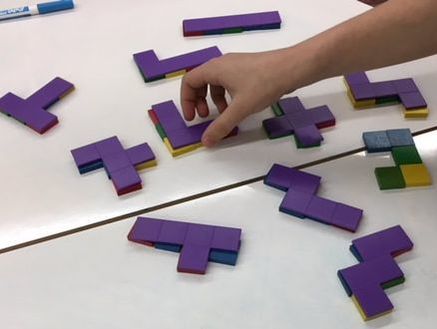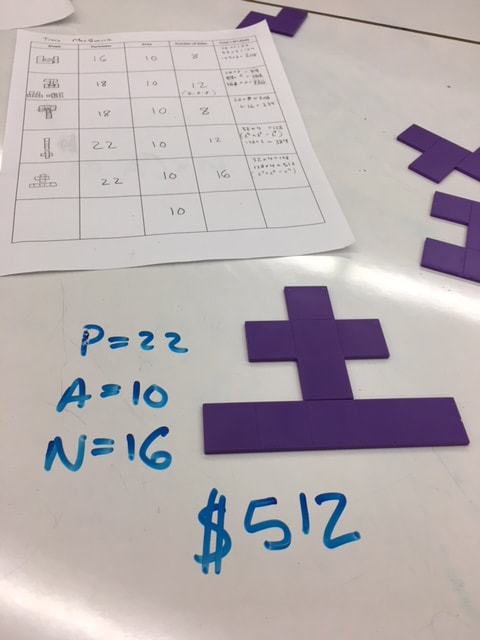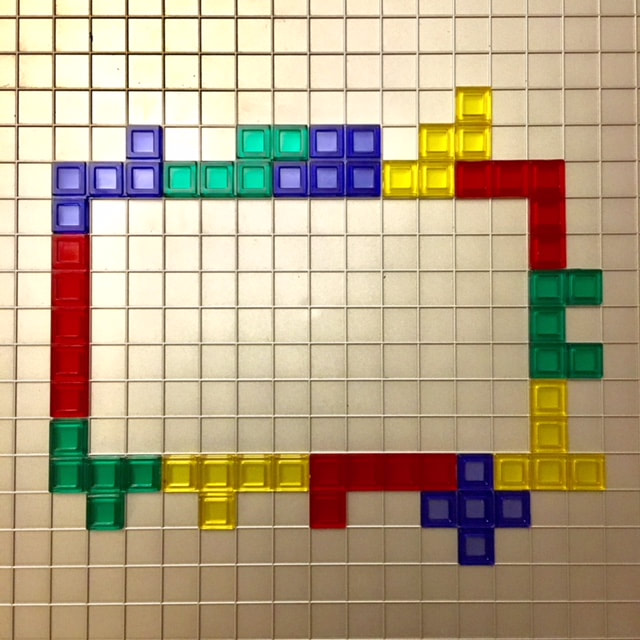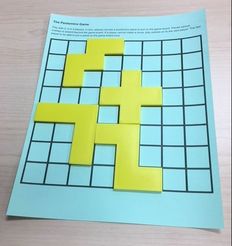An engaging puzzle with simple instructions is to ask students to create a rectangle using pentomino pieces. Let them figure out what rectangle dimensions are possible given the total number of squares in the pentominoes they're using (for a full set of 12 pentominoes, 3x20, 4x15, 5x12 and 6x10 are possible). You can also print off a variety of other shapes and challenge students to fill those shapes with pentominoes or have students create their own shapes and challenge their friends to solve them. Younger students can be challenged to fill an empty picture frame or tray with pentominoes. Here are five great games, puzzles and activities (in no particular order) that use pentominoes:
2. Pentomino Puzzles from Jon Orr (@MrOrr_geek) - Jon describes an activity where students are given a hundreds chart and a transparent pentomino. Ask students to place their pentomino on the hundreds chart so that it covers a sum of 135. Then ask students to share their strategies for finding the correct placement. Are there sums that are not possible to achieve? Continue the activity by selecting different tiles, giving different sums to find, creating equations and solving them. I also saw these questions posted by Amie Albrecht (@nomad_penguin) on twitter, "Can you find a pentomino that covers numbers that: sum to 150, sum to an even number, covers three multiples of 4, and more". Jon created an online Desmos Activity that allows you to do this activity virtually. 3. Pentomino Farms - I was introduced the the pentomino farms activity from Martin Gardener's book Knotted Doughnuts and Other Mathematical Entertainments. The task is to use the 12 pentominoes to build a fence around a field on your farm. The rule used to join the pentominoes to form a fence is that they must touch along the full edge of a square and not just at the corners. There are four types of farms to create. For each type, what's the largest field you can enclose?
4. How Convex is a Pentomino? - Which pentomino shape is the most convex? How do you measure "convexity"? This is an interesting question that generated lots of discussion on Twitter. Some interesting methods of measuring this were discussed by Alexandre Muñiz (@two_star) in his blog post, "Vexed by Convexity." I think it would make a great discussion for students to rank the pentominoes by convexity and then defend their choices.
If you have a favourite activity, puzzle or game featuring pentominoes, I would love to hear about it! EL
Viki Lawrence
2/19/2018 09:33:52 pm
Use all 12 Pentomino variations to create a complete quadrilateral. Lots of different variations exist. Comments are closed.
|
Categories
All
|




 RSS Feed
RSS Feed